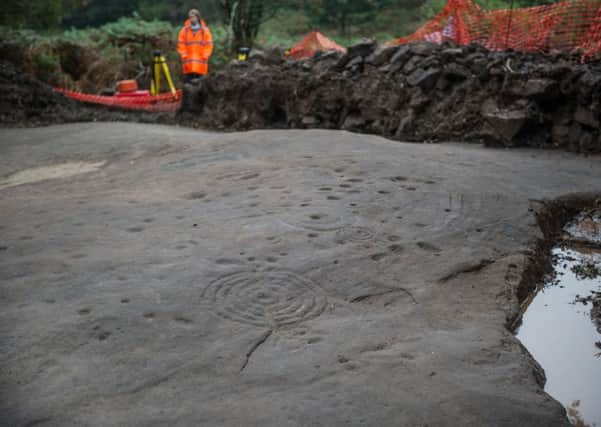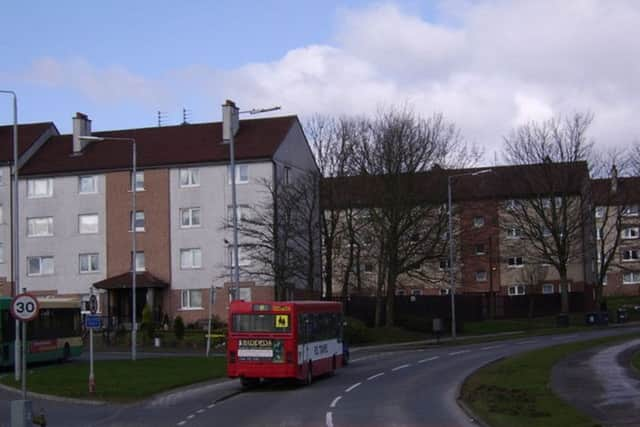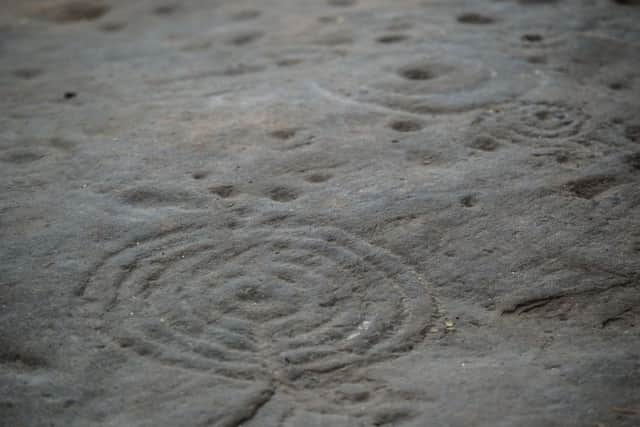When prehistoric people lived around Glasgow


People are known to have settled in the Glasgow area up to 10,000 years ago and now analysis of ancient rock art sites has identified a “ring” of probable Neolithic settlements around the city.
The creation of Glasgow is likely to have destroyed further evidence of Neolithic life in the area, experts believe.


Advertisement
Hide AdThe findings come as Scotland’s Rock Art Project works with communities across the country to record in detail some 2,000 ancient sites where mysterious cup and ring carvings can be found.
The markings are thought to be around 5,000 years old in most cases.
Dozens of theories surround the meaning of the carvings which may have served as territorial markers, astronomical maps or made as part of a ritual. They may even have been made simply to pass the time.


While the meaning of the symbols have yet to be deciphered, the markings leave a tantalising trail of evidence of how the country was populated in the distant past.
Dr Tertia Barnett, principal investigator of Scotland’s Rock Art Project, said a concentration of 14 to 15 pieces of rock art have been recorded in a park on the edge of Faifley, a housing estate to the north of Clydebank.
She said: “There is probably an awful lot more in this area. There is actually a ring of sites around Glasgow.
Advertisement
Hide Ad“My suspicion is that Faifley is a relic of a much more expansive spread of rock art and I think it offers a really important little glimpse of what might have been around Glasgow. It is really important that it is protected and recorded.”
People were likely to have been drawn to the area given good farming land and access to communication routes.
Advertisement
Hide AdDr Barnett added: “It is likely the Clyde was an important artery, connecting different areas to the sea and to the islands. From Faifley it would have been easy to get round the coast to Bute and Arran, for example.
“People would have travelled by water instead of through the wooded interior of the country and people were generally concentrated in the coastal regions.”
The Cochno Stone, described as the most important Neolithic cup and ring marked rock art panel in Europe, was excavated at Faifley in 2015 and 2016 by Dr Kenneth Brophy, senior lecturer in archaeology at Glasgow University.
The giant stone, measuring 13 metres by 7 metres, was buried in the 1960s to protect it from vandalism with it buried again following its recent excavation to further preserve it.
It is hoped that a replica of the Cochno stone can be made with the potential for it to drive tourism to the area being explored.
The Cochno stone is one of 30 rock art sites to have been recorded and mapped in West Dunbartonshire with a further 36 listed in Inverclyde, including three on Gourock Golf Course.
Advertisement
Hide AdA further concentration of rock art has been recorded at Rouken Glen in East Renfrewshire, Dr Barnett said.
The rock art sites are to be mapped out in relation to other Neolithic remains in a bid to build a stronger understanding of how the markings fitted into the wider landscape of the time.
Advertisement
Hide AdAnalysis of the style of carvings found in different geographical areas could also help to determine the significance of the sites and whether some identified meeting points where people gathered to share news and exchange artefacts, Dr Barnett added.
The greatest collection of rock art in Scotland can be found in Kilmartin Glen in Argyll with large numbers of examples found through Perthshire and into Angus, with a smaller amount found in the Highlands.
Scotland’s Rock Art Project, which will create a database of images and information of around 2,000 sites, is funded by the Arts and Humanities Research Council. The project is led by Historic Environment Scotland, with Edinburgh University and Glasgow School of Art also working on the research.
